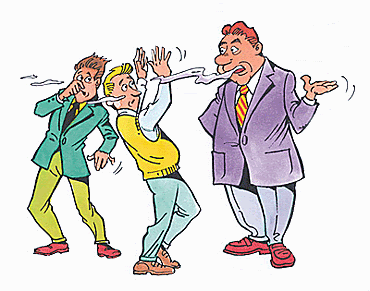Men Hairstyles
For men, hairstyles are just as important as anything else that affects their looks, whether it be the kind of shoes they wear or that new belt purchased yesterday.
If you're the kind of guy who like to take care of the way he looks, you're making the right decision in coming here and reading about what men hair styles are in and which are not. It is becoming a trend recently for men to take better care of their hair, and why not? The first thing anyone looks at on a person is their face; and that means their hair.
So what kind of hair can men wear? The choice isn't as limited as some might think it is. We've made this guide to help you explore the different kinds of styles that are popular today.
Your tools. When it comes to men's hair, a good hair gel, wax or other kind of product is your best friend. Please note that "good" doesn't mean "extra super hold". Absolutely not, a good men's hair product is rather a product will give a desired effect to your hair. So explore a bit, try different products and see which you like most.
Short hair. Short cuts are deemed to be men hair style's classic cuts. We've all had them, and they do the job quite well. Different ways of wearing a short cut could be with bangs forward or at a certain vertical angle. Using some of your hairstyling products to get a modern spike effect is also a very trendy way to have your hair. If you are African American, you can try having waves, although the process is usually time consuming. Short hairstyles are usually being considered out of style, which brings us to medium length haircuts.
Medium cuts. Hollywood stars all over have been adopting 2 new styles: the bed head and the shag. The point of the bed head hairstyle is to make bed head hair look good. This style isn't simply a tussle and go. Ironically, the bed head look requires a bit more work. Adding some type of gel to your hair will get you this new look we are talking about. The shag has also been quite popular. Letting your hair grow down to your neck and then either straightening it off or tussling it up front is one of the few ways you can wear the shag hairstyle.
Trends aren't limited to Hollywood though; reverse mullet anyone? Yes, what started as a fashion disaster is now practically the only defining factor concerning tastes in music, fashion and lifestyle. The "emo" haircut is here with its wild color exploration and its crazy shapes and it's not about to leave anytime soon. In fact it is probably one of the faster growing hairstyles amongst teens. Its long bangs have even charmed Hollywood with their own adaptations.
Long cuts. Long hair is a difficult style for men to wear. Men will often have thick, strong, waved or curly, and stubborn hair. When it starts to grow too long, instead of falling down it will twist and turn into a massive bush... undesirable to say the least. But to those that can pull it off they pull it off well and there are always products and tips a professional hairstyler can help the envious with. Other long hairstyles also include dreads which aren't uncommon and still fashionable, there is never anything wrong with honoring your roots.
Hair Don'ts .Remember those cool styles rock stars used to wear? They were sported by the Rock and Metal legends and were obscenely long and wild. Those styles are now old and unnecessary, so if you find yourself with a similar cut, maybe you should consider a shorter hairstyle. Hey, if Bruce Dickinson did it, maybe you should too.
Another style to keep away from is the mullet. Now we appreciate how cool Solid Snake is, but please, control the urge to imitate the hero. Other styles that don't require explanations are bowl cuts, Rodman colors, as well as rat tails, which is a strand of hair at the back of the head that grows very long while the rest of your hair stays short.
Some of you might be scared of jumping into a new style so suddenly and would rather take progressive steps and grow into your new short style, for example, by gradually getting your hair cut over a period of time. You should also consult a hair stylist instead of a barber if you are going to require a complicated cut, and to make sure your hair stylist understands what you want, bring some pictures of the desired hairstyle.
Sincerely,
eleena
How to Land That Big Job
15 years ago









